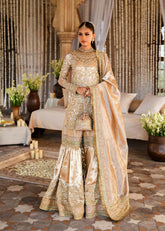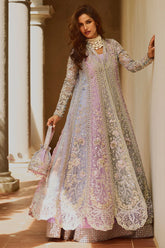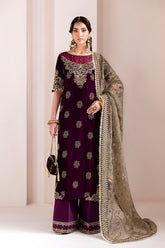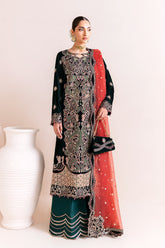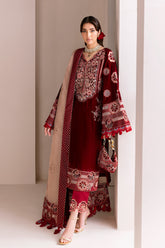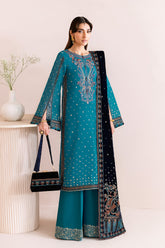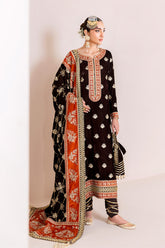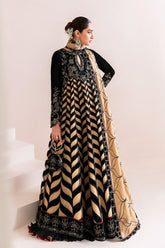Cross-Cultural Dressing: When Global Designers Take Inspiration from Ethnic Wear
Introduction to Cross-Cultural Dressing:
In an ever-globalizing world, fashion serves as a universal language that bridges cultural divides. Cross-cultural dressing represents a vibrant tapestry woven from diverse traditions and modern aesthetics.
Ethnic wear, with its rich history and distinctive designs, often forms the foundation upon which global designers build their collections. By integrating elements from different cultures, fashion creators craft unique styles that resonate with a global audience. This fusion, seen in trends like Baroque clothing, not only offers a fresh perspective on traditional attire but also encourages appreciation for cultural diversity. It celebrates individuality while promoting unity through fashion.
Cross-cultural dressing also serves as a powerful form of self-expression. By embracing ethnic wear, you can showcase your heritage or honor a culture you admire. This act engages you in a global dialogue, broadening your perspective and enriching your personal style. This article invites you to explore how cross-cultural dressing shapes contemporary fashion—and the role you can play in its evolution.
Influences of Global Cultures on Modern Fashion:
Global cultures have a profound impact on modern fashion, as designers increasingly look beyond their borders for inspiration. This cultural exchange fosters creativity and results in collections that are both unique and universally appealing, much like the innovative designs seen in Hussain Rehar pret.
One of the most significant influences is the use of traditional textiles and patterns. Designers often incorporate these elements to add depth and identity to their garments. For example, African prints, known for bold colors and geometric designs, have been embraced in Western fashion, creating a vibrant fusion of styles.

Fashion shows and international collaborations also play a key role in spreading cultural influences. Events like Paris Fashion Week and the Met Gala provide platforms for designers to showcase their cross-cultural creations to a global audience, including stunning collections such as Mohsin Naveed Ranjha dresses.
By recognizing these influences, you can better understand the dynamic nature of fashion as a reflection of our multicultural world.
Notable Designers Incorporating Ethnic Elements:
Several designers have made significant contributions to cross-cultural fashion by incorporating ethnic elements into their work. These trailblazers draw inspiration from diverse cultures, creating collections that are both innovative and respectful of their sources.
One such designer is Dries Van Noten, known for his eclectic use of ethnic patterns and textiles. By combining traditional techniques with modern silhouettes, Van Noten crafts garments that tell a story of cultural fusion. His collections often feature elements from Indian, African, and Asian cultures, showcasing the beauty of diversity in fashion.

Another notable designer is Stella Jean, who blends her Haitian heritage with Italian craftsmanship. Jean's collections celebrate the vibrant colors and bold prints of her roots while incorporating Western tailoring. Her work highlights the importance of cultural exchange in fashion, demonstrating how traditional elements can be reimagined for contemporary audiences.
These designers set the stage for a new era of cross-cultural fashion that values both innovation and heritage. By supporting their work, you contribute to a movement that champions diversity and creativity, enriching your own fashion journey.
The Role of Textiles and Patterns in Cross-Cultural Fashion:
Textiles and patterns are the foundation upon which designers build their creations. Rich in historical and cultural significance, these elements offer endless possibilities for innovation.
Traditional textiles such as Indian silk, African wax prints, and Japanese indigo dye provide a rich palette for designers. These materials are chosen for their unique textures, durability, and vibrant colors, making them ideal for statement pieces. By incorporating these textiles, designers honor the craftsmanship and cultural heritage of their origins.
Patterns hold cultural meaning and are often used to convey stories or symbolize beliefs. For example, the paisley pattern, originating from Persia, is now a global motif in fashion. By reinterpreting these patterns, designers create visually stunning garments and invite exploration of the cultural narratives behind them.
The Impact of Social Media on Ethnic Fashion Awareness:
Social media has revolutionized how ethnic fashion is perceived, providing a platform for designers, influencers, and consumers to share and discover new styles. Platforms like Instagram and Pinterest allow designers to showcase cross-cultural collections to a worldwide audience. These visual mediums highlight the beauty and intricacy of ethnic wear, sparking interest and inspiring trends.
Social media also encourages cultural exchange and collaboration as designers and consumers share their interpretations of ethnic wear. Engaging with this content broadens fashion horizons and deepens appreciation for the artistry and heritage behind these garments. This interaction enriches personal style and supports a more inclusive fashion industry.
Sustainable Practices in Cross-Cultural Dressing:
Sustainability is an important consideration in cross-cultural dressing as designers and consumers seek to minimize environmental impact. Embracing sustainable practices allows you to enjoy fashion that is both stylish and responsible.
Many designers turn to traditional production methods that prioritize quality and longevity over mass production. Supporting brands that value craftsmanship and ethical sourcing promotes a fashion industry that respects people and the environment.
Sustainable cross-cultural fashion also involves using natural, locally sourced materials. Choosing garments made from eco-friendly fabrics like organic cotton or hemp reduces your carbon footprint and supports sustainable agriculture. This commitment benefits the environment and helps preserve the cultural significance of ethnic wear for future generations.
Challenges Faced by Designers in Ethnic Wear Integration:
Integrating ethnic wear into modern fashion presents challenges as designers balance innovation with cultural sensitivity. Avoiding cultural appropriation is a primary concern, requiring designers to respect the cultural significance of the elements they use. Supporting designers who prioritize cultural sensitivity helps promote diversity and inclusivity in fashion.
Another challenge is maintaining the authenticity of ethnic elements while adapting them for modern audiences. This balance preserves traditional techniques while appealing to contemporary tastes. Consumers can support brands that celebrate both heritage and innovation, fostering a culturally rich fashion landscape.
Conclusion:
The future of cross-cultural dressing will continue to evolve, driven by creativity, innovation, and a growing appreciation for diversity. The fusion of ethnic wear with modern design offers endless possibilities to express individuality while celebrating global cultures.
Sustainability and ethical production will play a greater role as designers and consumers prioritize the planet’s health. Supporting these practices helps shape a fashion industry that values both creativity and responsibility.
Cross-cultural dressing invites exploration and cultural appreciation through fashion. Embrace the diversity and beauty of ethnic wear, contributing to a fashion landscape that celebrates our global connections.

